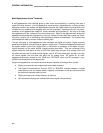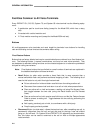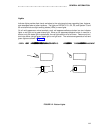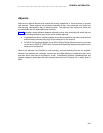
GENERAL INFORMATION
Tones
The tones that a voice terminal user hears can be divided into two categories:
Ringing Tones—those that are generated in the base of the voice terminal and can be
heard in the surrounding area; they indicate incoming calls.
Handset Tones—those that are transmitted through the handset and heard only by the
user or through the speakerphone when it is turned on.
External Ringing Tones
Ringing tones are the only tones heard
outside the voice terminal
when it is receiving a call. This
signal cycles in 1-, 2-, or 3-ring patterns. On System 75 and DEFINITY G1 and G3, only one
cycle of ringing is heard if the multi-appearance voice terminal is busy with another call. On Sys-
tem 85 and DEFINITY G2, the cycling repeats (except on the ISDN 7500-series sets).
One ring—a call from another voice terminal in the system
Two rings—a call from the attendant or outside caller
Three rings—priority calls, for example, Automatic Callback, Priority Calling, or Ringback
from a queued call
One short unmodulated tone—an intercom call
Ring-Ping (half ring)—a call redirected away from the voice terminal because Send All
Calls or Call Forwarding is active; also called coverage tone.
On System 85 and DEFINITY G2, any of these external tones, plus a repeated unmodu-
lated tone, may be administered to indicate an intercom call.
Handset Tones
The following tones are heard through the handset:
Answer Tone—a high-pitched continuous tone indicating that a data endpoint has
answered.
Busy Tone—a low-pitched tone repeated 60 times a minute; indicates that the number
dialed is in use.
Call Waiting Tone (Single-Line Voice Terminals)—one, two, or three beeps (short
bursts of high-pitched tone), not repeated; indicates to the user at a busy single-line ter-
minal that an incoming call is waiting to be answered. The number of beeps indicates the
source of the waiting call:
One beep—a call from another voice terminal in the system
Two fast beeps—a call from the attendant or an outside caller
Three fast beeps—a priority call
2-9


















